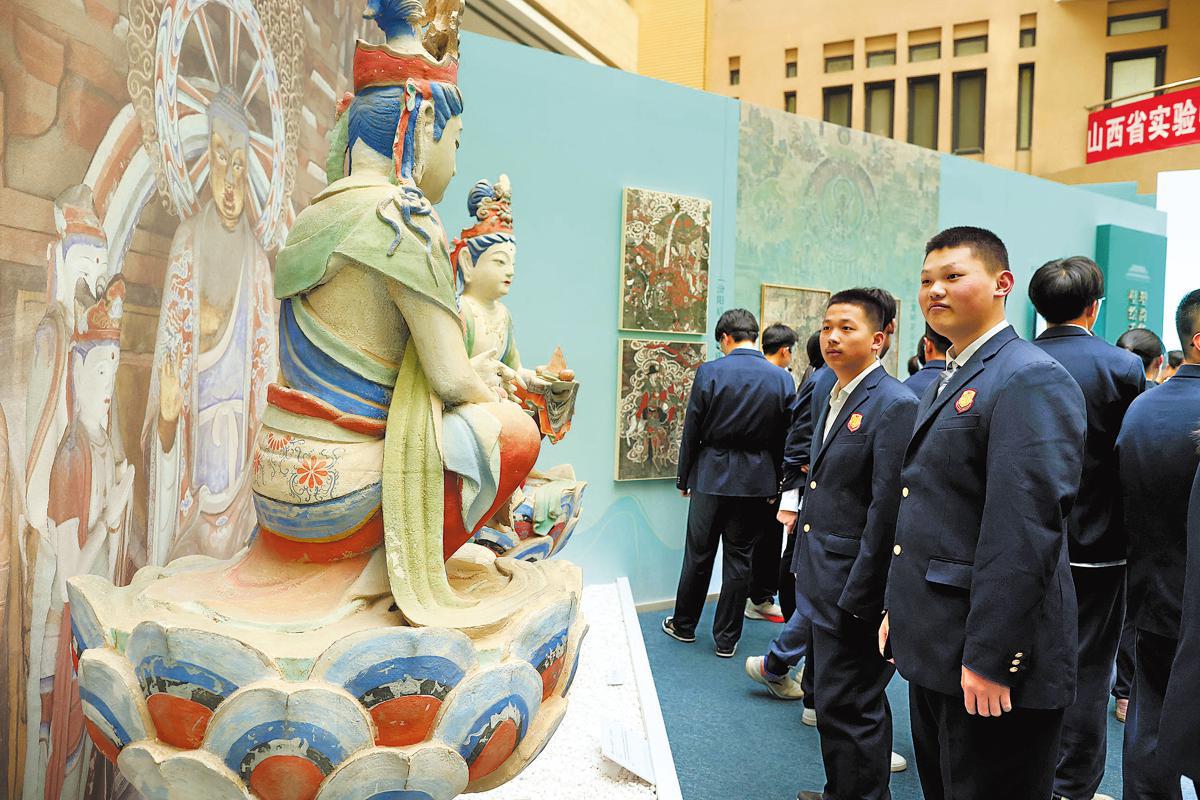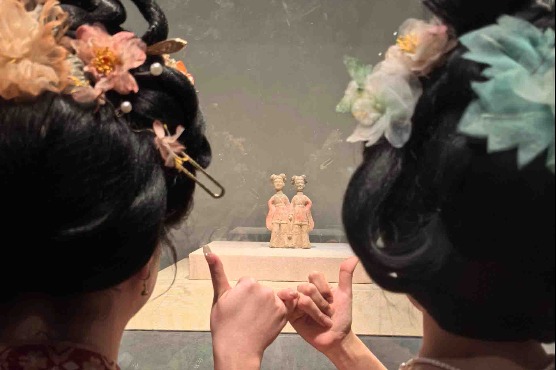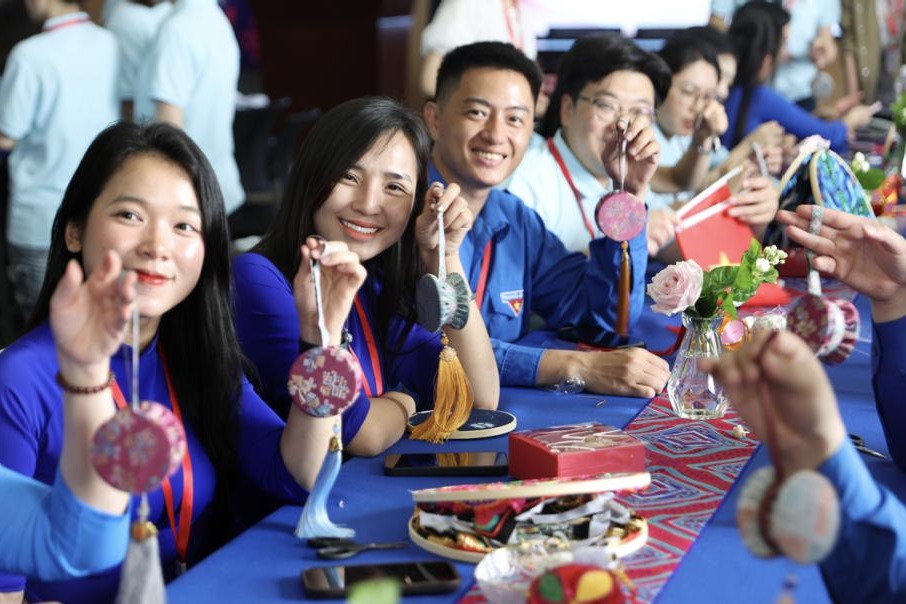Ancient architecture museum opens in Shanxi high school
Endeavor hoped to get more young people involved in cultural heritage


Shanxi's first museum based on a school campus opened on April 10, showcasing the province's wealth of historical heritage and ancient architecture, and immersing the students in the culture of museums and cherishing the past.
The Ancient Architecture Campus Museum, located in Shanxi Experimental Secondary School in the provincial capital Taiyuan, aims to integrate cultural heritage protection into the educational environment of the campus.
As part of the museum's inauguration, a prelude exhibition titled Ancient Architecture Technology Enters Campus was also launched.
"Through my role as a guide, I deeply appreciated the spirit of the nation's master craftsmen," said Ren Hongye, a student at the school. She found herself transforming classroom knowledge into dynamic cultural dissemination, realizing that "preserving traditional culture is everyone's responsibility".
Using ancient building models, digital interactions and informative panels, the exhibition showcases the heritage and current technological preservation efforts for Shanxi's ancient buildings. This allows students and teachers to engage closely with history.
Highlights of the exhibition included a model of the Yingxian Wooden Pagoda, the world's tallest wooden pagoda; a 3D-printed sculpture model of Foguang Temple in Wutai county, Xinzhou city; and an interactive installation of "the 28 constellations" — colored statues depicting celestial phenomena — from the Yuhuang Temple in Jincheng city.
These exhibits utilized digital technology to make abstract historical knowledge visible, tangible and interactive. They merged history, art and technology, providing an immersive experience that highlighted the charm of the collision between traditional craftsmanship and modern technology.
"This combination of tradition and technology, allowing us to explore ancient buildings on computers, helps us understand Shanxi's architectural heritage," said Song Jiaqi, another student. "It makes us more confident in promoting Shanxi's culture and proud of our country's technological advancements."
At the unveiling ceremony of the museum, Wu Zhijun, the school's principal, said, "I hope this opportunity will build a cultural bridge, allowing students to engage closely with ancient architectural relics, appreciate the charm of Shanxi's culture, and foster pride in our local heritage and confidence in our national identity."
Shanxi is known for having the largest and most well-preserved collection of ancient buildings in China, with nearly 28,000 structures, including temples, opera stages and pavilions. About 80 percent of China's surviving wooden structures from before the Yuan Dynasty (1271-1368) are in Shanxi, including the only three remaining Tang Dynasty (618-907) wooden buildings. This wealth of ancient architecture provides unparalleled opportunities for cultural heritage education.
"Integrating cultural heritage into campuses is not just about spreading knowledge, it's about nurturing cultural confidence and a sense of protection in the younger generation," said Lu Yi, director of the Shanxi Academy of Ancient Building, Painted Sculpture and Fresco Preservation, a research institution of the Shanxi Culture Relics Bureau. As one of the leading institutions for science popularization in the province, it has been striving to bring the research results of Shanxi's cultural heritage to a wider audience.
Lu said that the campus museum is improving its exhibition content and presentation, promising an even more comprehensive display in the future.
The unveiling ceremony was part of the school's 2025 science and technology festival.
At the event, the institute dispatched a team of young volunteers. They conducted professional explanations and technical demonstrations on-site, helping students operate 3D scanning equipment and making abstract professional knowledge tangible and accessible.
Lu hoped that the museum, as the first of its kind in Shanxi, would serve as a model and lead the way for similar initiatives. He added that in the future, this model could be expanded to more schools, allowing the benefits of cultural heritage protection to reach more young people.
Contact the writers at zhuxingxin@chinadaily.com.cn





































